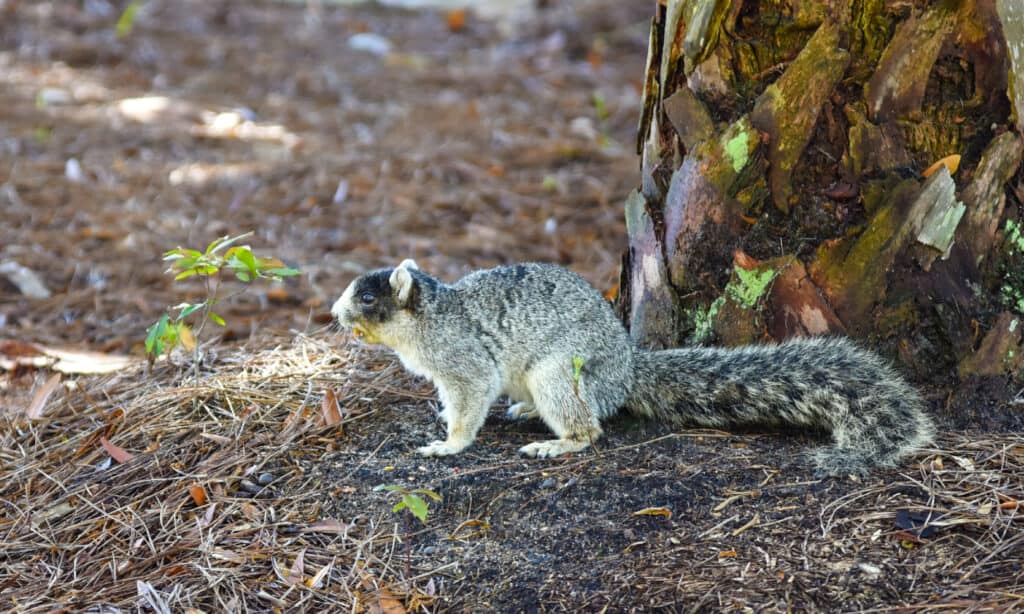
The post Everything You Need to Know About the Animals of Congaree National Park appeared first on A-Z Animals.
Congaree National Park was once one of the least-visited parks on the East Coast. It saw a record-breaking year in 2023, where visitors began to realize the beauty of its landscape. Visitation increased by 45,592 people, totaling 250,114 by the end of the year. While some might prefer the hoodoos of Utah parks or the allure of Ohio’s most popular hiking trails, Congaree has a fascinating ecosystem that’s unlike any other on the East Coast.
Its trails wind through dense swamplands, surrounding hikers with 80-foot-tall cypress trees. Its woodland trails are home to copious numbers of wildlife, many of which haven’t been spooked by a steady stream of hiking visitors. Therefore, it’s a great national park for those hoping to observe wildlife. Here are some of the animals you can expect to see during your Congaree adventure.
Southern Fox Squirrel
One unique aspect of Congaree National Park is its controlled burns in the upland forest. Also known as “prescribed burns,” these help prevent forest fires from escalating. It may seem counterintuitive, but it works. Burning the dried kindling at the forest floor, such as dry pine needles, leaves, and other debris, limits the severity and spread of a wildfire if one were to occur. The longstanding trees in the uplands can withstand some heat, but there’s also an animal that has adapted to this preventative burning.

The southern fox squirrel boasts a unique form of camouflage.
©Keith V/Shutterstock.com
The southern fox squirrel could be mistaken for a skunk if you look too quickly. With its black fur and white nose and ears, it’s also easily concealed by newly-burnt leaf debris. This form of camouflage protects it from predators and helps the animal to hide among the burnt underbrush. Those hiking the upland forest trails may see this squirrel skittering up nearby trees.
Foxes
Red and gray foxes can be found in Congaree National Park. Gray foxes are actually more abundant than red foxes in South Carolina, but have far better tree-climbing skills. For this reason, they are elusive and not often seen by visitors. The gray fox is at home among Congaree’s forests, primarily inhabiting its dense woodlands. This is another reason why sightings are so rare. If a trail doesn’t traverse gray fox territory, hikers aren’t likely to see one.
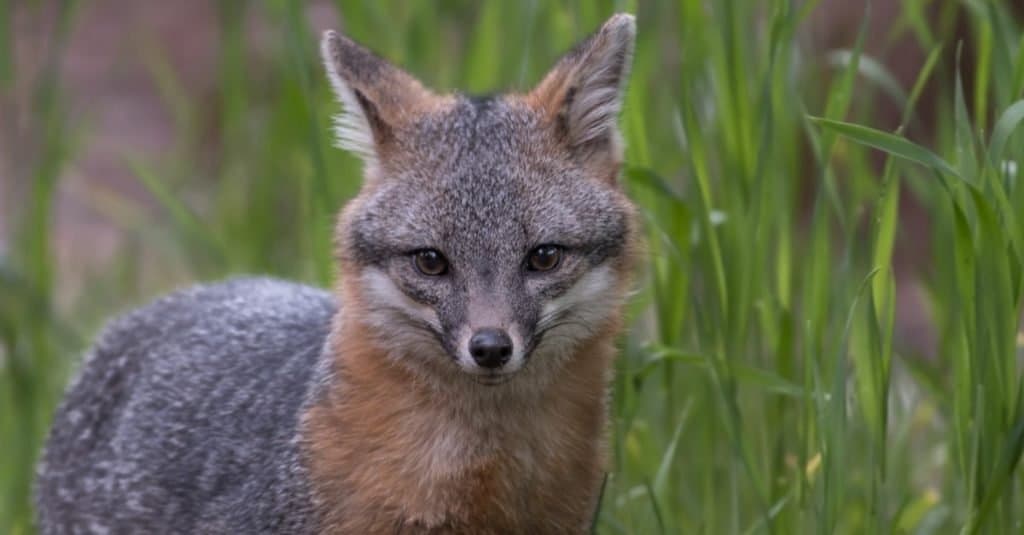
The gray fox is a skilled tree-climber and can be challenging to find.
©Hayley Crews/Shutterstock.com
Red foxes are more common, and they inhabit the majority of South Carolina. Since they’re primarily ground-dwelling, visitors have a better chance at spotting one from a trail. They also prefer dense woodlands, but can be found throughout the park. They prey on smaller mammals and rodents, and are typically active during dawn and dusk. Early-morning or late-evening hikers have the best chance at seeing them.
Coyote
Congaree National Park’s natural swamplands provide cover for many predators, including the coyote. It preys on the small animals that also seek shelter under tree canopies and fallen logs. While coyotes are a rare sighting for hikers, it’s not unheard of to witness them traveling between hunting spots. They’re skilled at scavenging, as well, and the swamps make prime ground to forage for carcasses.

Coyotes are at the top of the food chain in Congaree National Park.
©karlumbriaco/iStock via Getty Images
Those visiting in the early morning hours may have a better chance at seeing them in the lowlands. They’re typically active at night, but move during dawn and dusk. Coyotes are generally not interested in human activity, but they will turn tail and leave if they sense a threat. However, hikers should still exercise caution when trekking through the park’s more densely wooded regions.
Bobcat
Hikers in Congaree are more likely to find bobcat tracks than they are an actual bobcat. While these big cats are native to the parklands, they are elusive. Bobcats typically avoid humans and are skilled at remaining undetected. They prefer remote park woodlands and hardwood forests, where they hunt small prey. They’re also crucial to Congaree’s ecosystem by controlling the populations of rodents and other small mammals.
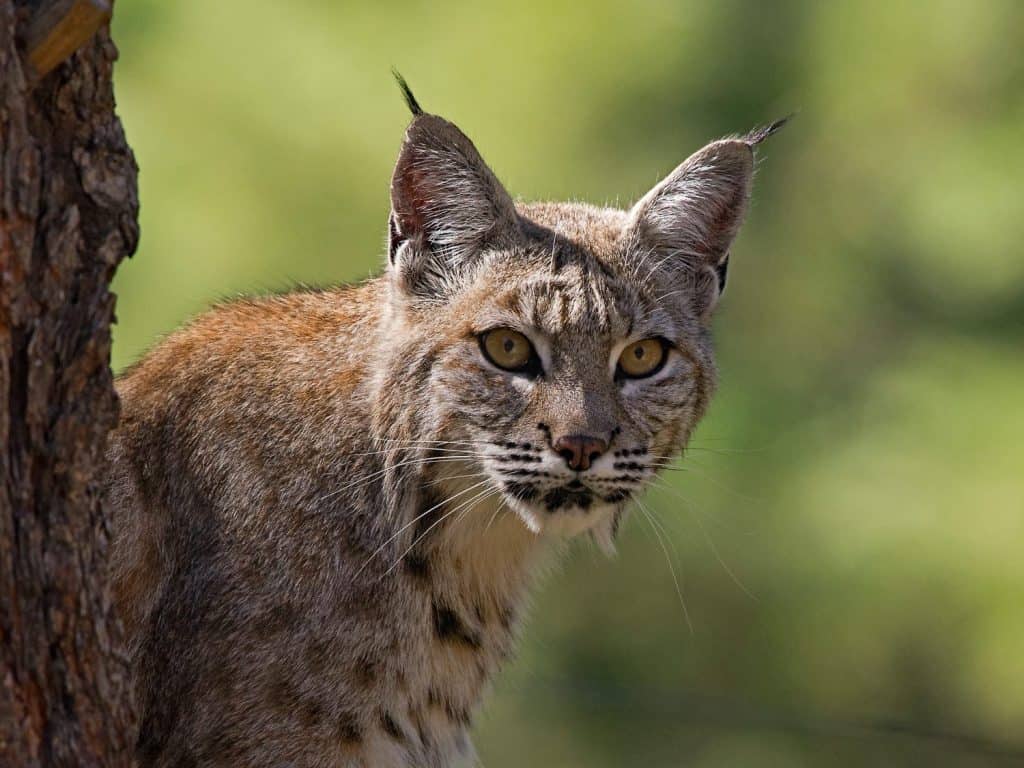
Bobcats are roughly twice the size of the average housecat.
©Laurie E Wilson/Shutterstock.com
While visitors are unlikely to see a bobcat, a hiker on Reddit claimed they were followed by one in the park. Some believe this may have instead been a juvenile mountain lion. These sightings are even rarer, although mountain lions are found in the southeastern United States. However, no reported sightings have ever been confirmed. Bobcats don’t typically track prey as a big cat would, and rarely see humans as a meal.
White-Tailed Deer
Deer are often spotted in Congaree National Park by careful, quiet hikers. They can be found along the banks of the Congaree River or stopping for a drink at streams. Visitors may also encounter them while traveling through the park’s uplands or old-growth forests. They are quick to escape and sensitive to loud noises, so it’s essential to keep this in mind while hiking.
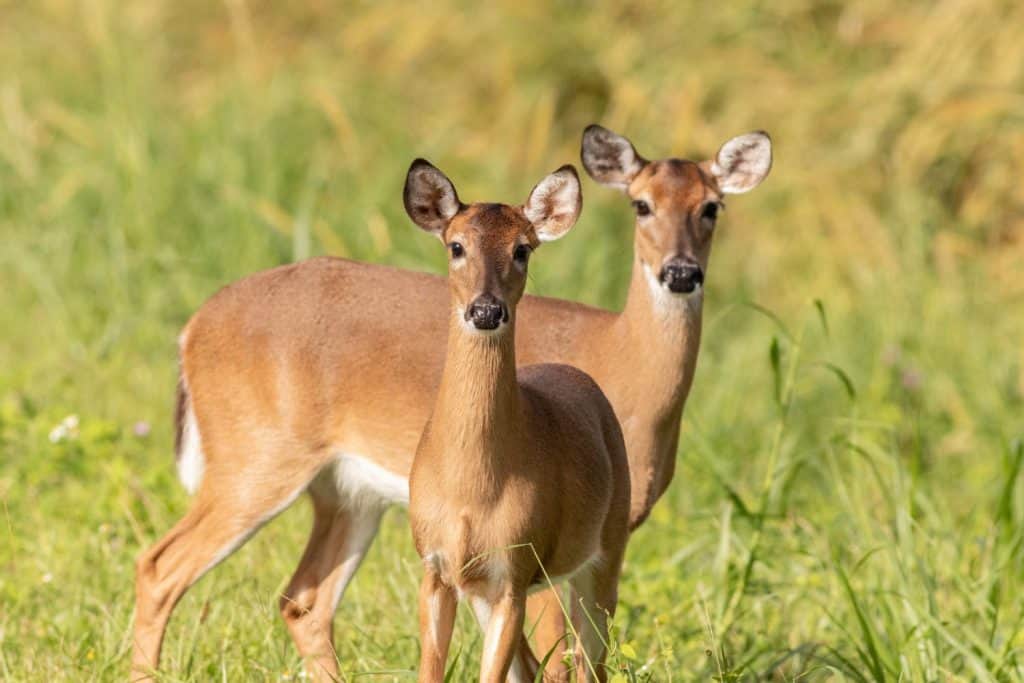
White-tailed deer are common throughout North America.
©Omar F Martinez/Shutterstock.com
South Carolina has a healthy deer population, and many of them inhabit Congaree because of its healthy ecosystem. With few disturbances save for the occasional hiking party or camper, these animals thrive in their woodlands. Visitors might have a better chance at seeing white-tailed deer later in the day, as they’re primarily crepuscular.
Bats
Bat research at Congaree National Park has been ongoing since 2004. Since then, researchers have identified seven species inhabiting the park, with three additional species that are not native. Those include:
- Big Brown Bat (Eptesicus fuscus)
- Brazilian Free-Tailed Bat (Tadarida brasiliensis)
- Tri-colored bat (Perimyotis subflavus)
- Eastern Red Bat (Lasiurus borealis)
- Evening Bat (Nycticeius humeralis)
- Hoary Bat (Lasiurus cinereus)
- Rafinesque’s Big-Eared Bat (Corynorhinus rafinesquii)
- Seminole Bat (Lasiurus seminolus)
- Silver-Haired Bat (Lasionycteris noctivagans)
- Southeastern Myotis (Myotis austroriparius)
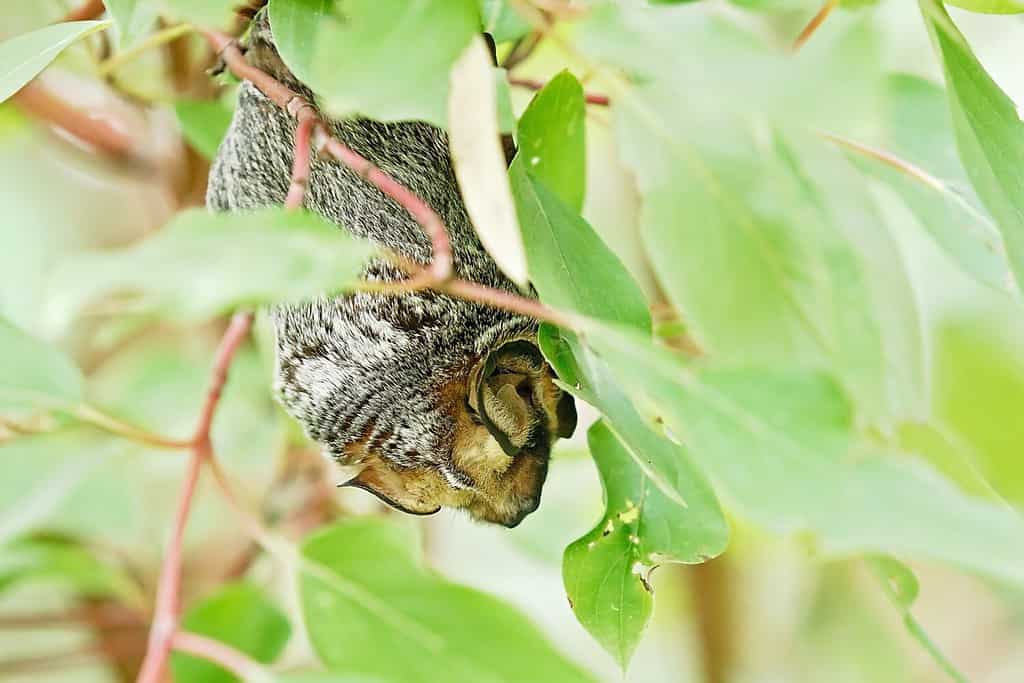
Hoary bats are small, but can sometimes be seen just after dusk in Congaree National Park.
©Jamie McMillan/Shutterstock.com
Several of these, such as the hoary bat, Rafinesque’s big-eared bat, and the southeastern myotis, are listed as conservation concerns in South Carolina. Rafinesque’s big-eared bat and the southeastern myotis are both considered species of Special Concern in South Carolina. This makes the work of bat conservation that much more essential, not only in Congaree but in South Carolina as a whole. These bats primarily reside in the park’s floodplains, and it is here that visitors can spot them around dusk. They are nocturnal, however, so sightings are rare.
Beaver
If you know how to spot the signs of an active beaver, you might be able to find one in Congaree National Park. They inhabit the waterways around Cedar Creek, where they build lodges and occasionally construct dams. Telltale signs of beaver activity include gnawed-on trees, chewed branches, and changes in the river’s flow.
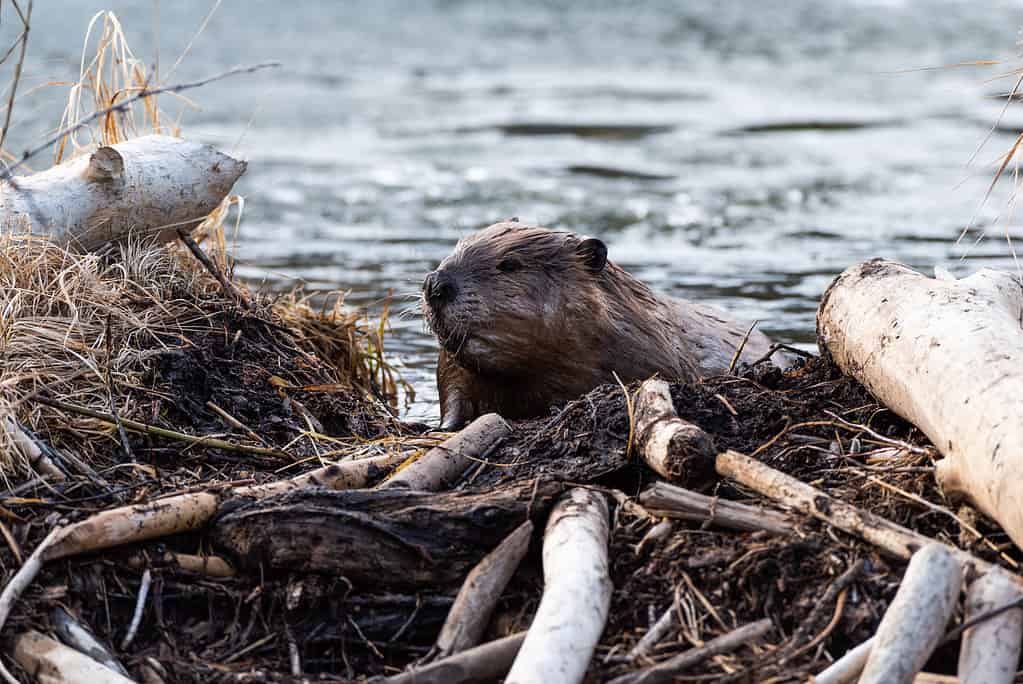
Beavers are skilled construction workers, and their dams are a powerful tool for building and maintaining their habitats.
©Dan Pepper/iStock via Getty Images
The best time to look for beavers is just before winter hits. This is when they’ll be busy doing construction work along Cedar Creek. Beavers can be skittish, so hikers should remember two things: be patient and quiet. These wetland animals are a crucial part of the park’s wildlife, and should be observed but left undisturbed.
River Otter
Another animal visitors might see near Cedar Creek is the river otter. These animals inhabit the creek’s waterways and oxbow lakes, but are wary around humans. They’re primarily active during dawn and dusk, so early-morning hikers have a better chance of spotting them. River otters prey on the creek’s native turtle and crayfish population, making them an essential part of the park’s food chain.
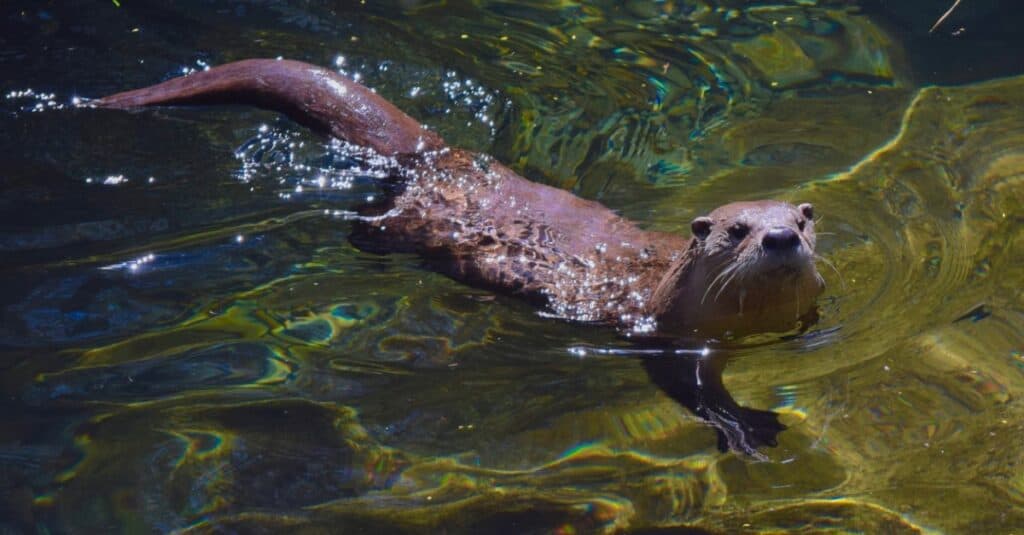
River otters can spend as much time on land as they do in the water.
©iStock.com/Kathryn Farley
Those kayaking or canoeing down the creek have an even better chance at seeing these animals. The creek’s aquatic plant life makes perfect hiding spots, and being on the water provides a better vantage point. Even so, these otters are clever and know how to hide quickly among the creek’s dense foliage.
Feral Hogs
The feral hog (Sus scrofa) population in Congaree National Park is invasive, making it a bittersweet addition to its wildlife. The biggest threat posed by these wild pigs is their destructive nature. Feral hogs root into the forest floor and cause irreversible damage. They’re also not picky with their diets and eat practically anything, disrupting the natural food cycle. These animals can also be aggressive, causing other native animals to compete for food, shelter, and territory.
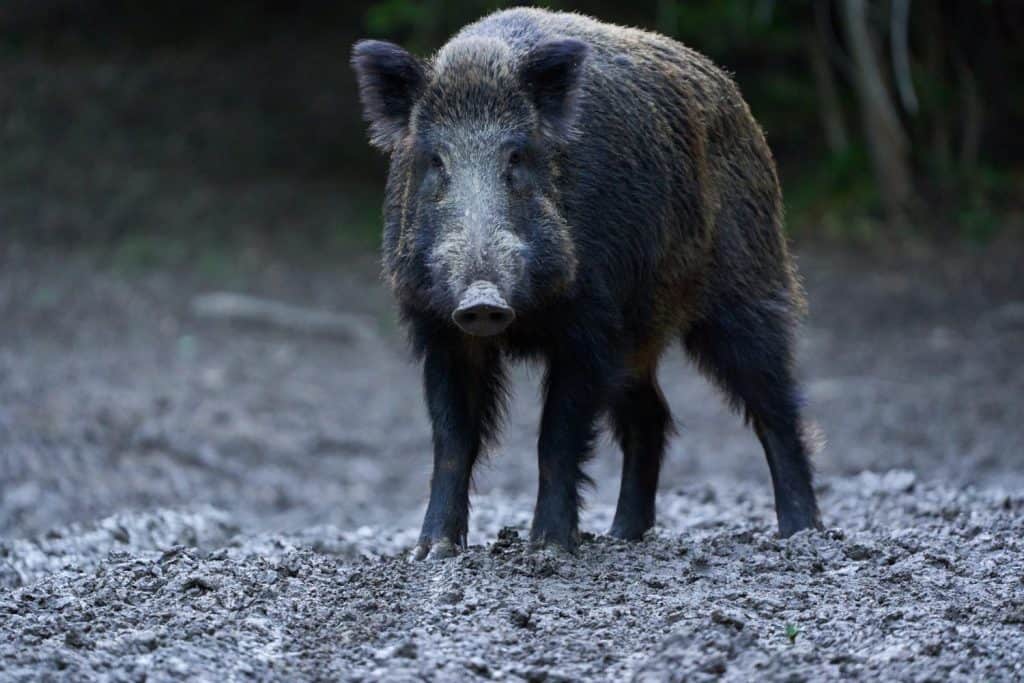
Feral hogs are an invasive species in South Carolina.
©Slatan/Shutterstock.com
Since they have few enemies and reproduce quickly, their high populations are somewhat of a nightmare. They pose little threat to humans but are abundant and can be seen from the park’s trails. While all wildlife sightings can be exciting, visitors should be aware of this species’ invasive presence in Congaree.
American Alligator
The American alligator is often seen more by kayakers in Congaree National Park. Land sightings are rarer, but more frequent during warmer months. During this time, alligators move inland as water levels rise. These sightings are even more common after spring floods. Although highly skilled in camouflage, a keen eye can spot them floating just under the water’s surface.
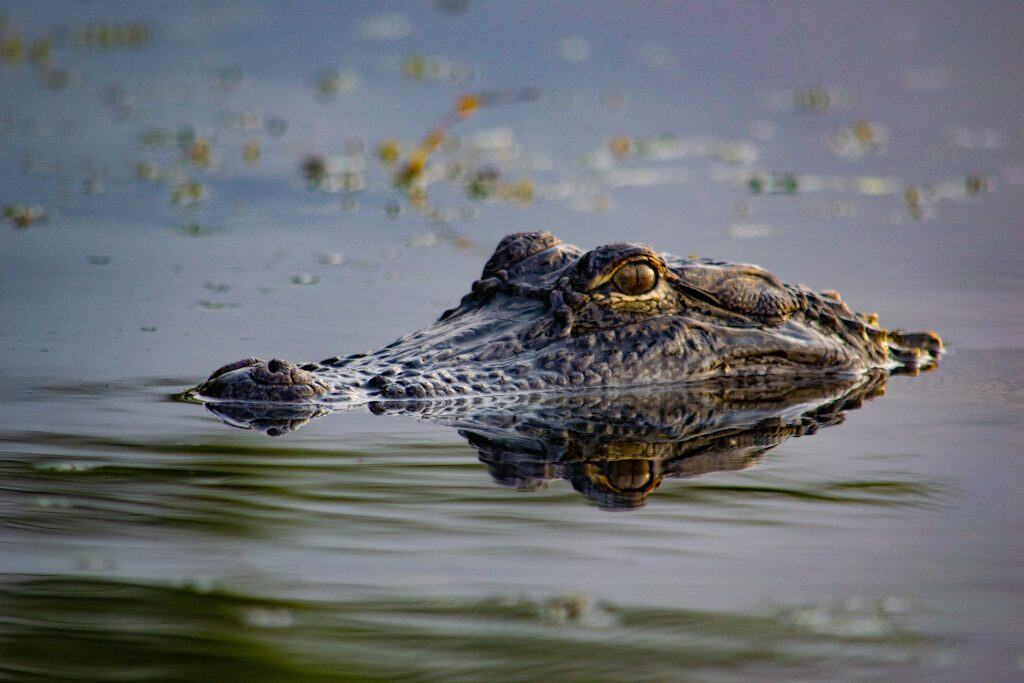
The American alligator is an apex predator in Congaree National Park.
©SomervilleArts/Shutterstock.com
The park’s famed swamplands and lakes are the best places to find alligators. Summertime hikers may even find more than one basking in the sun on a hot day. However, it’s important to remember that American alligators are at the top of the food chain in places like Congaree. Visitors should keep their distance and always exercise caution when they see an alligator in the water.
Birds
According to the Audubon Society, there are currently 87 recognized bird species in Congaree National Park. This includes a mix of predator birds, such as the red-tailed hawk, the red-shouldered hawk, bald eagles, and the barred owl, as well as songbirds. The red-bellied woodpecker is among the birds visitors might see, along with a variety of warblers and wrens.
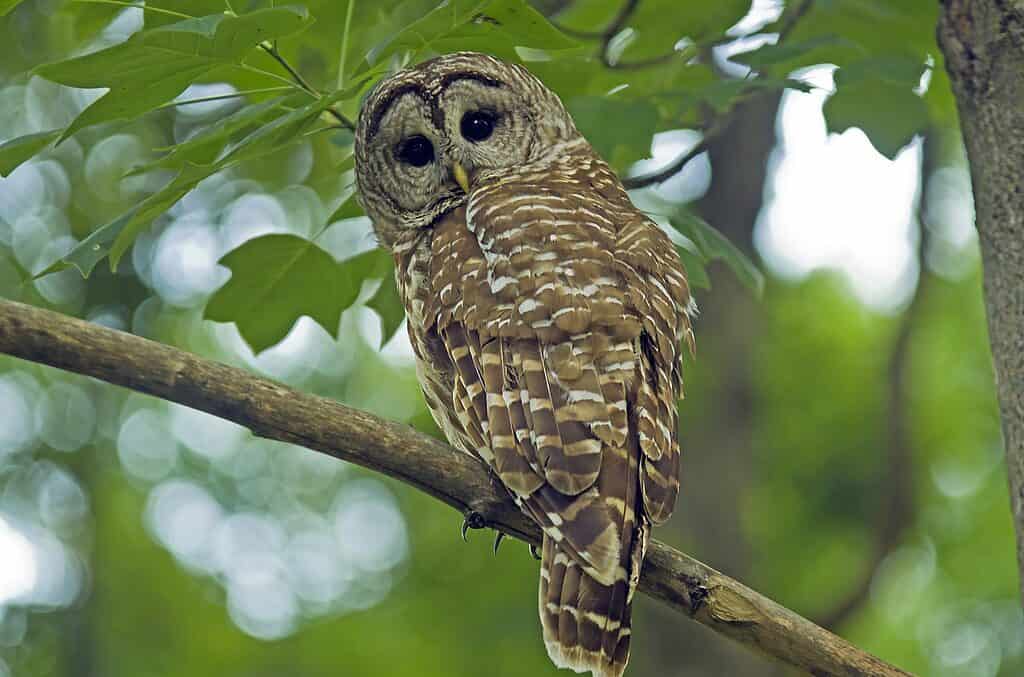
Barred owls can camouflage in thick woodlands thanks to alternative color patterns on their wings.
©C.M.Corcoran/Shutterstock.com
There are several excellent trails for birders to follow while hiking in Congaree. The Bates Ferry Trail is a short 2.3-mile trek that’s known by birdwatchers for its diverse range of wildlife. The Kingsnake Trail is another popular birding spot, offering access to Cedar Creek. Lastly, the Fork Swamp Trail leads hikers to an oxbow river, where birders can observe bald eagles and osprey.
Turtles
Congaree National Park is home to nine species of turtle. Some of them are rare, which makes sightings even more exciting. One of these is the spotted turtle (Clemmys gutatta), which is considered Vulnerable on the IUCN Red List and is listed as Endangered in some states. Other at-risk species include the Eastern box turtle and the Eastern mud turtle. While not at-risk, hikers can also find the yellow-bellied slider, which is common in the park’s waterways.

The spotted turtle is an at-risk species in South Carolina.
©Jay Ondreicka/Shutterstock.com
Many of these turtles are affected by climate change and habitat loss, making their presence in Congaree that much more vital. They can be found in shallow wetlands, including creek beds and shallow lake water. Visitors should avoid touching or interacting with these turtles. Observing quietly and then moving on is the best practice to ensure the future survival of many of these species.
Amphibians
Thanks to its low-lying wetlands, Congaree National Park is home to approximately 50 amphibious species. These are primarily a mix of frogs and salamanders, which inhabit the park’s swamps, oxbow lakes, and creeks. Visitors who don’t see the park’s frogs will surely hear them, especially vocalizations from green treefrogs, spring peepers, the pine woods tree frog, and Brimley’s chorus frog.
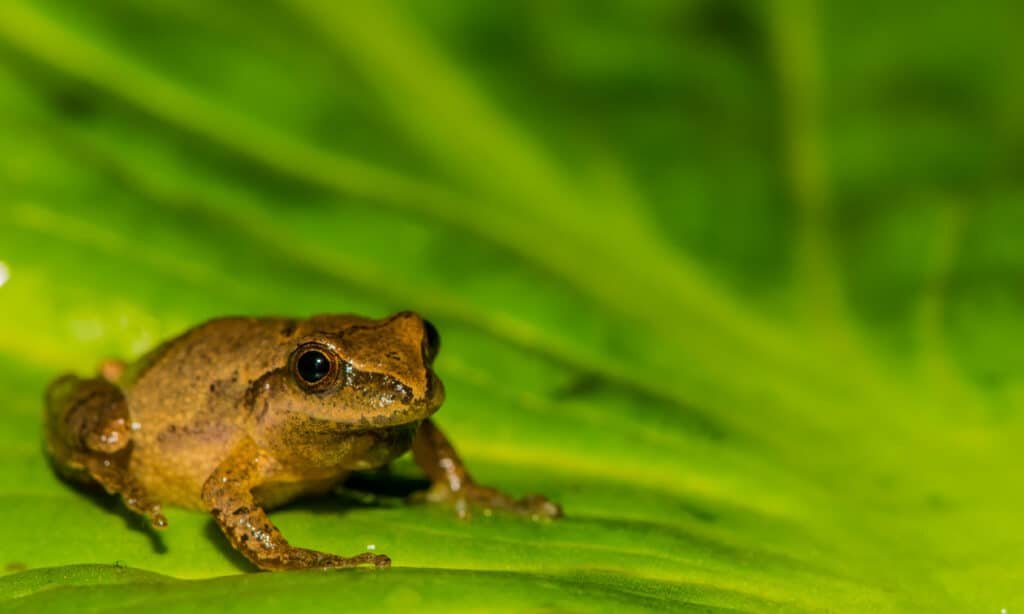
Spring peepers are recognizable by the timing and pitch of their unique vocalizations.
©Jay Ondreicka/Shutterstock.com
Salamanders are slightly more elusive and are quick to avoid confrontation. Those with a quick eye and enough patience may find the three-lined salamander or the marbled salamander. These inhabit the same waterways as frogs and also prey on small insects and pests.
Snakes
One of the biggest surprises for visitors is discovering that Congaree is home to 21 species of snakes. This includes three venomous species: the timber rattlesnake, the cottonmouth (also known as the water moccasin), and the copperhead. Encounters with these snakes are rare, but hikers should remain vigilant when visiting the park. To date, there have only been a few recorded snake bites in Congaree National Park. Both the timber rattlesnake and the copperhead prefer dry underbrush and rock crevices, while the cottonmouth can be found near and in the park’s waterways.

Cottonmouths are easy swimmers and effortlessly navigate the water as they do on land.
©Brandon B/Shutterstock.com
However, hikers are more likely to see one of the park’s non-venomous snake species. These include the rat snake, black racer, brown snake, eastern kingsnake, water snake, and various garter snakes. While some, like the rat snake, are large snakes, they pose little threat to humans. More often than not, the first instinct of these snakes is to escape rather than attack.
The post Everything You Need to Know About the Animals of Congaree National Park appeared first on A-Z Animals.
October 10, 2025 at 05:02PMLianna Tedesco
.jpeg)
.jpeg)

0 Comments